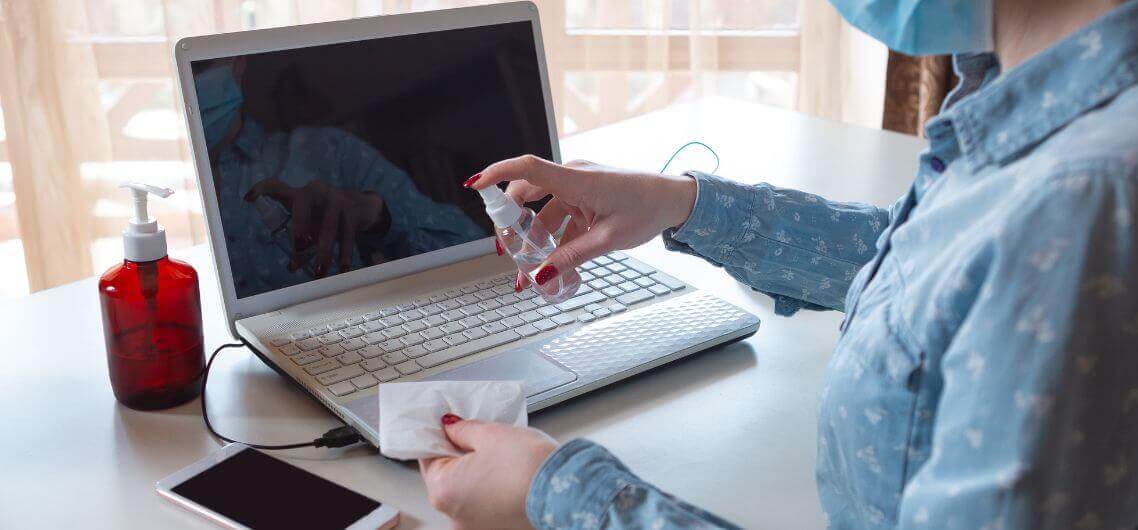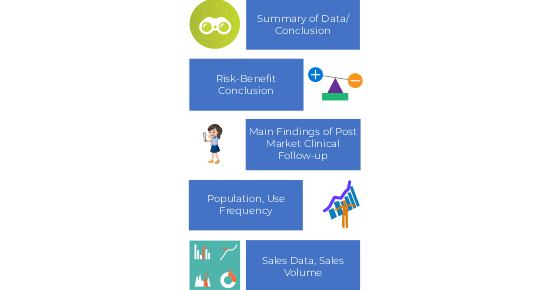Introduction to PSUR and Post Market Surveillance Reports (PMSR)
Under the new EU MDR (Regulation (EU) 2017/745) and IVDR, manufacturers of medical devices must now follow stricter rules to ensure product safety after their devices are on the market. Two important reports under these new regulations are the Periodic Safety Update Report (PSUR) and the Post Market Surveillance Report (PMSR).
The PSUR (Periodic Safety Update Report) is required for moderate and high-risk medical devices—these are Class IIa, IIb, III, and implantable devices. This report helps to review and document whether the device still has a good risk-benefit balance based on the latest safety and performance data collected during its use. In simple terms, it tells us: Is this device still safe and doing its job properly?
On the other hand, the PMSR is required for low-risk medical devices such as Class I (under MDR) and Class A and B (under IVDR). While it is a simpler report compared to PSUR, it still plays a key role in post-market surveillance. The PMSR must be kept ready and submitted only when a Competent Authority or Notified Body asks for it.
For many manufacturers, this is a completely new requirement, especially for those who were not used to such reporting under the previous Medical Device Directive (MDD). While the concept of a PSUR is familiar in the pharmaceutical industry, it is quite new in the world of medical devices.
One of the curiosities of the new European Medical Device Regulation (MDR) EU 2017/745 is the requirement to prepare Medical Device Periodic Safety Update Reports (PSUR-MDR Article 86, IVDR article 81) and Post Market Surveillance Reports (PMSR-MDR article 85, IVDR article 80). While the PSUR is not new to the pharma world, it is a fairly new concept to medical devices. It should be noted that PSUR and PMSR are new requirements under the completely revised post market surveillance activities defined by the MDR.
The objective of the Periodic safety update report is to present a comprehensive and critical analysis of the risk-benefit balance of the product, taking into account new or emerging safety information in the context of cumulative information on risk and benefits
A Periodic Safety Update Report (PSUR) is essentially an extension of Post Market Surveillance Report. The PSUR is intended for moderate and high-risk medical devices (class IIa, IIb, III, implantable). It summarizes the results and conclusions of the PMS data.
Regulatory Framework and Requirements
Under the EU MDR, preparing a PSUR (Periodic Safety Update Report) or PMSR (Post Market Surveillance Report) is now a mandatory part of post-market surveillance. Every medical device, based on its risk class, must follow specific reporting rules. Low-risk devices (Class I) require PMSRs only when asked by authorities. However, moderate to high-risk devices (Class IIa, IIb, III, and implantables) need regular PSURs—either every year or every two years.
The PSUR MDR requirement helps ensure that the benefits of the device continue to outweigh any risks over time. It summarizes safety data, product performance, and any corrective actions taken.
Contents of Periodic Safety Update Report (PSUR)
A Periodic Safety Update Report (PSUR) for medical devices provides a clear summary of how safe and effective a product remains once it’s in use. Required under PSUR MDR (EU 2017/745), it includes essential sections like basic device details, planning of surveillance activities, collected safety data, benefit-risk evaluation, and actions taken based on the findings. For moderate and high-risk devices, PSUR requirements also involve submitting the report through the Notified Body or EUDAMED system.
The EU MDR PSUR helps manufacturers show that their devices are still safe, and it supports continued market approval. As a trusted Medical Device Regulatory Consultancy, we guide companies in preparing PSURs according to PSUR EU MDR rules. Whether you’re updating procedures or need a PSUR template, we simplify the process.
Does your device require Periodic Safety Update Report (PSUR) or Post Market Surveillance Report (PMSR)?
All the devices require one of these reports. The table below summarizes which report is required and when. The requirements between MDR and IVDR are quite similar.
| TYPE | MDR OR IVDR CLASSIFICATION | PMSR OR PSUR? | HOW TO SUBMIT? | FREQUENCY |
| MEDICAL DEVICE | CLASS I | PMSR | Only upon request | When Necessary A Notified Body or Competent Authority May Request |
| CLASS IIa | PSUR | During Notified Body Conformity Assessment Review | At Minimum Every 2 Years |
| CLASS IIb (Non- Implantable) | PSUR | During Notified Body Conformity Assessment Review | At Minimum Every Year |
| Class II b (Implantable) | PSUR | Maybe Via EUDAMED or Notified Body Review | At Minimum Every Year |
| Class III (All) | PSUR | Maybe Via EUDAMED or Notified Body Review | At Minimum Every Year |
| IVD | CLASS A AND B | PMSR | Only upon request | When Necessary A Notified Body or Competent Authority May Request |
| CLASS C | PSUR | During Notified Body Conformity Assessment Review | At Minimum Every Year |
| CLASS D | PSUR | Maybe Via EUDAMED or Notified Body Review | At Minimum Every Year |
Device Classification and PSUR/PMSR Submission Requirements
Under EU MDR and IVDR, every medical device must follow strict post-market rules. Based on the device’s risk class, manufacturers must submit either a Post Market Surveillance Report (PMSR) or a Periodic Safety Update Report (PSUR). Low-risk devices (Class I, Class A/B IVD) need PMSRs, usually submitted only when asked by a Notified Body. Medium and high-risk devices (Class IIa, IIb, III, Class C/D IVD) require a PSUR – Periodic Safety Update Report, reviewed every 1–2 years.
A PSUR medical device report includes safety data, analysis, actions taken, and updates on risk-benefit balance. This is a new but essential part of EU MDR PSUR and PSUR MDR compliance.
Frequency and Timing of PSUR Submission
The Periodic Safety Update Report (PSUR) for medical devices must be submitted regularly, depending on the device class. As per EU MDR PSUR requirements, manufacturers of Class IIa devices need to update their PSUR every two years, while Class IIb and Class III devices require an annual PSUR. For implantable devices, the PSUR may be submitted via EUDAMED or through the Notified Body. This timing ensures a consistent check on the risk-benefit profile of the device after it’s on the market.
Manufacturers of Class I devices are only required to prepare a Post Market Surveillance Report (PMSR) and submit it upon request. At Maven Profcon Services LLP, our experts support you in aligning with PSUR MDR obligations—from drafting to timely submission.
Need help understanding PSUR EU MDR expectations or building compliant reports? Our medical device regulatory consultants are here to guide you through every step of the PSUR Periodic Safety Update Report process.
Structure and Format of PSUR
The Periodic Safety Update Report (PSUR) for medical devices is a structured document required under EU MDR. It presents a clear picture of a device’s safety and performance after it is placed on the market. The PSUR MDR format includes:
- Meta-information (device name, UDI, manufacturer info)
- Planned implementation steps
- Product data, such as sales or usage volume
- A detailed overview of PMS data collected
- Analysis of benefits and risks
- Any corrective actions taken
- A clear conclusion
This PSUR periodic safety update report is mandatory for Class IIa, IIb, and III devices, and must be updated regularly—at least once every 1 or 2 years depending on the class.
EUDAMED TO SUBMIT PSUR?
The PSUR and PMSR are just two examples of many new demands being placed on manufacturers by the new European Medical Device Regulation. It can be difficult to make sense of it all but there are ways we can help. If you already know about the changes and need help updating procedures, coming up with a PSUR template or conducting a gap analysis, consider letting our team assist you with MDR transition.
Impact on Manufacturers and Stakeholders
The introduction of the Periodic Safety Update Report (PSUR) for medical devices under the EU MDR has changed how manufacturers manage post-market data. Now, companies making Class IIa, IIb, III, and implantable devices must prepare detailed PSURs regularly. These reports are not just paperwork — they show that the device continues to be safe and effective after being sold. For manufacturers, this means stronger systems for tracking device performance, analyzing complaints, and taking action when risks are found. For stakeholders like notified bodies and regulators, PSUR MDR reports provide clear proof of ongoing safety. The PSUR EU MDR also helps build trust with healthcare providers and patients. Our Medical Device Regulatory Consultancy supports manufacturers in meeting PSUR requirements, creating templates, and ensuring compliance. Whether you’re new to PSUR MDR or need help with audits, we can guide you through the process with confidence and clarity.
Summary and Key Takeaways
Under the EU MDR, the Periodic Safety Update Report (PSUR) is a key document required for moderate to high-risk medical devices (Class IIa, IIb, III) and IVDs (Class C, D). The PSUR ensures continuous evaluation of the risk-benefit balance based on post-market surveillance data. Unlike PMSRs, which are for lower-risk devices, PSURs must be updated regularly—yearly or every two years depending on device class—and submitted to Notified Bodies or via EUDAMED.
As a Medical Device Regulatory Consultancy, we help manufacturers meet all PSUR MDR obligations, including gap analysis, PSUR templates, and full post-market surveillance strategy support.
If you’re unsure whether your product requires a PSUR or PMSR, our experts can guide you through the EU MDR PSUR requirements. The new regulations can be complex, but with the right help, PSUR compliance becomes manageable.
We’d be glad to help!!







